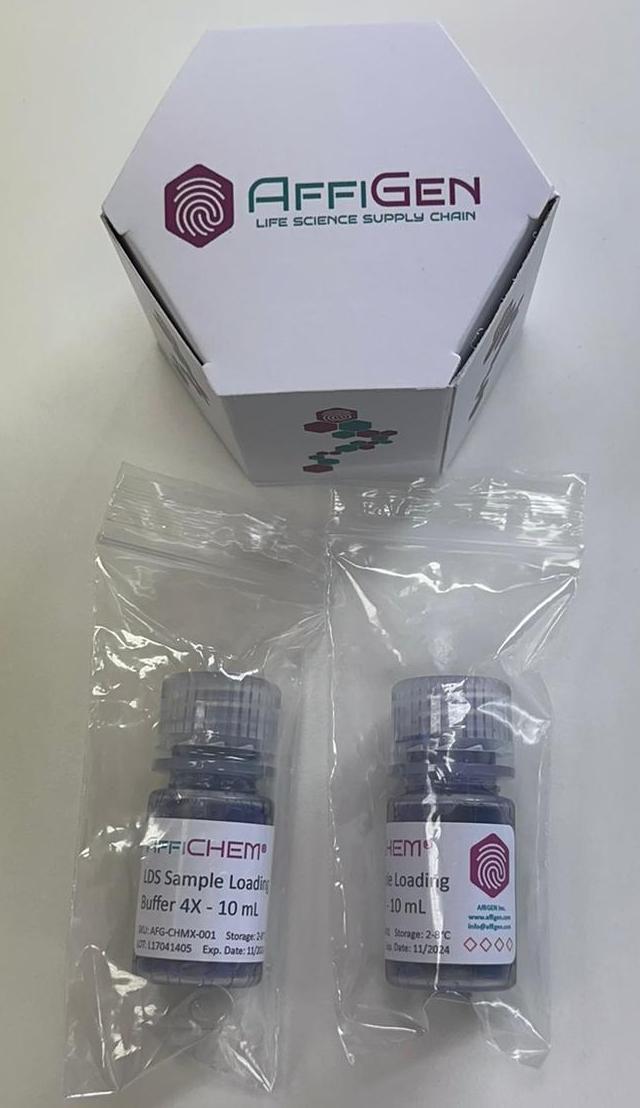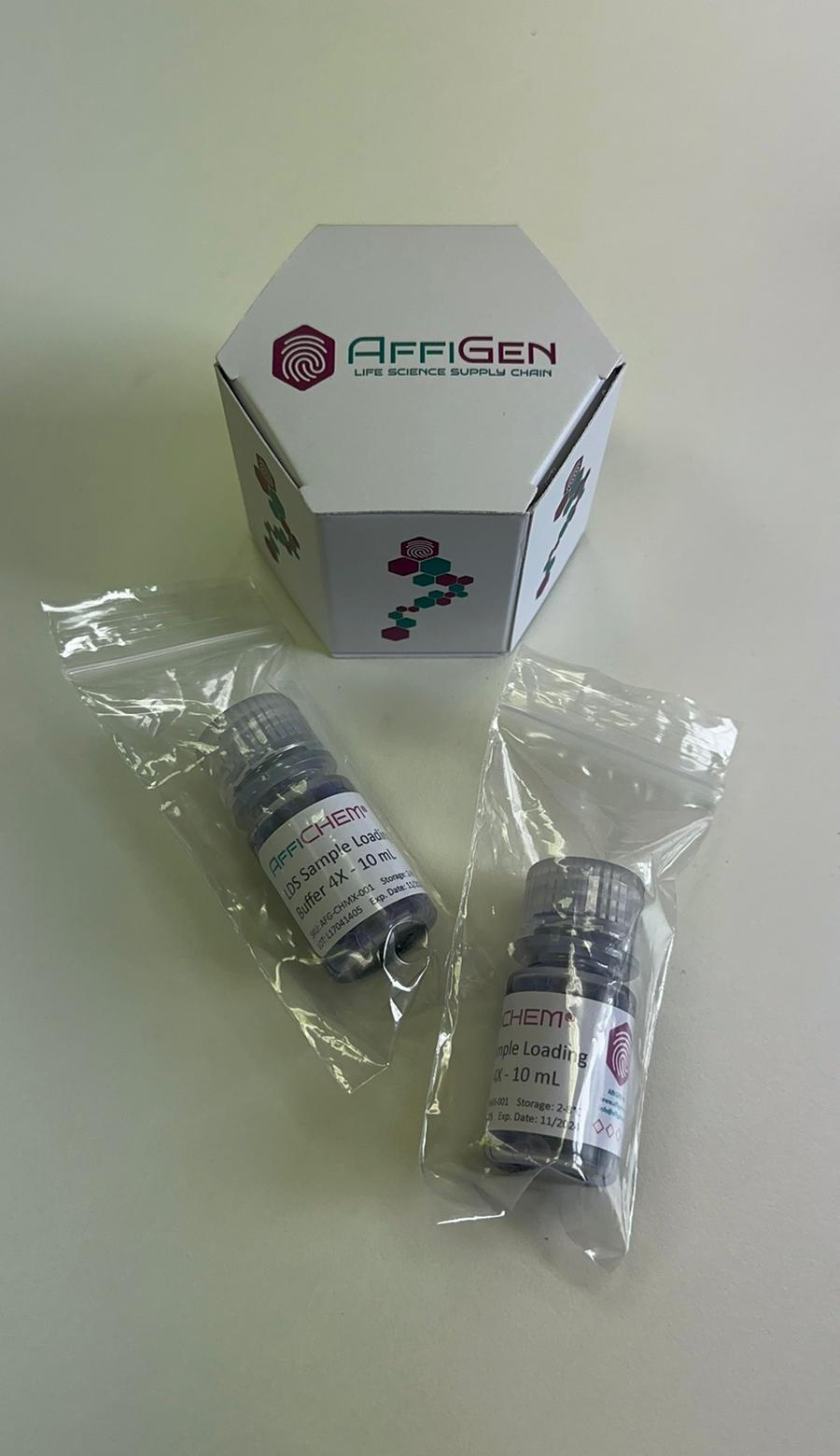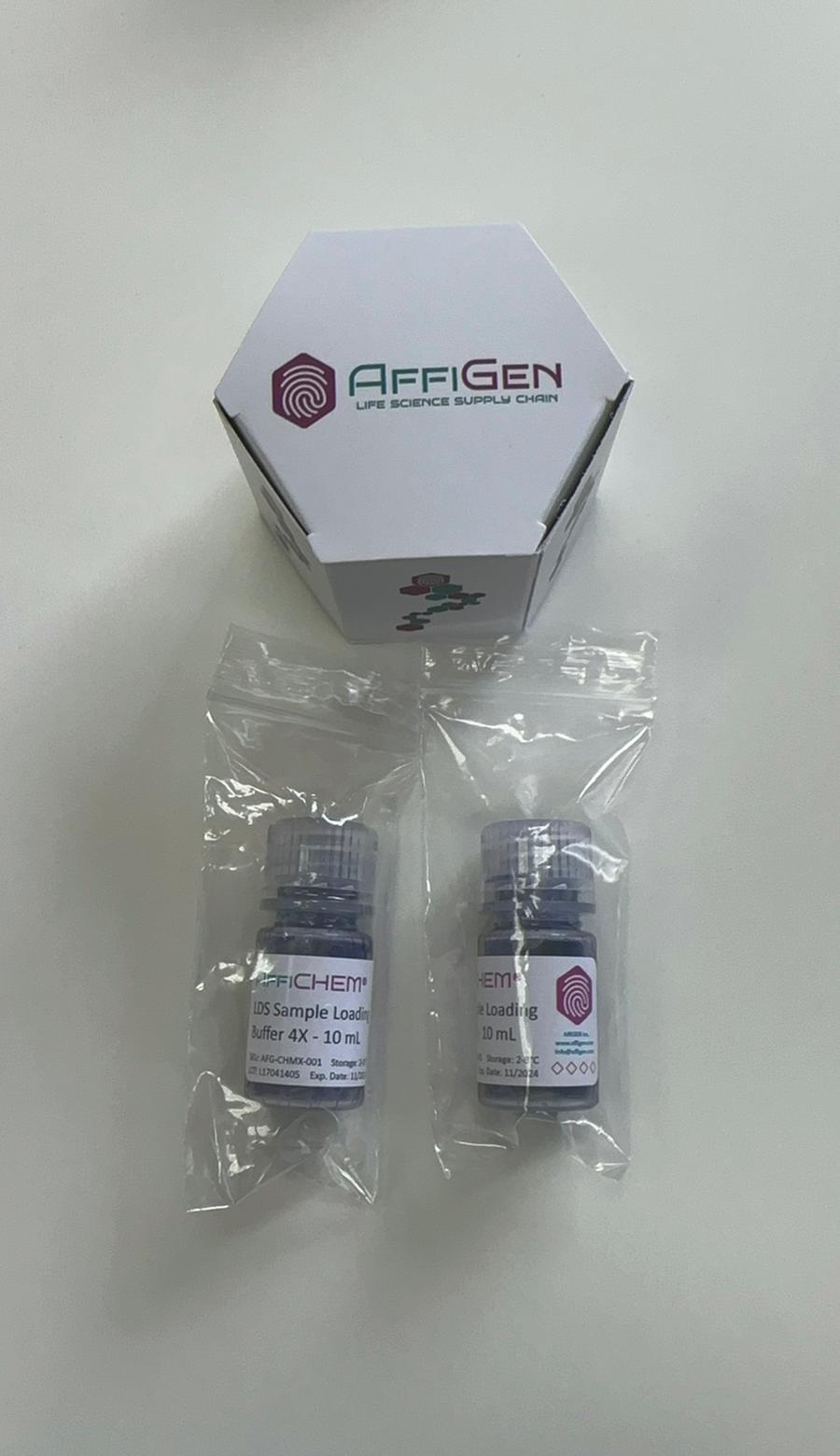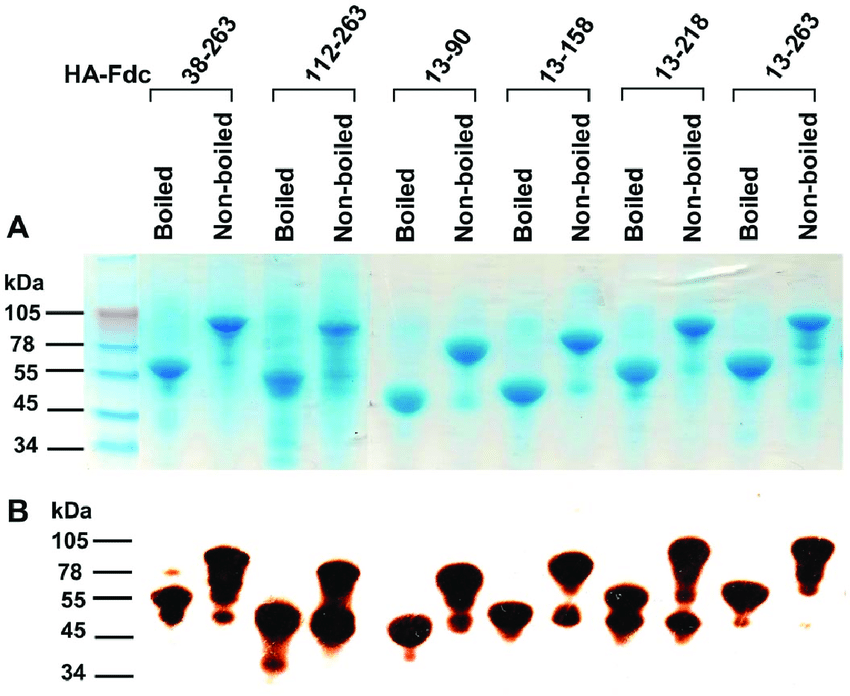Maximize Protein Analysis Precision with LDS Sample Loading Buffer 4x: Your Key to Enhanced SDS-PAGE Results
Discover the unparalleled efficacy of LDS Sample Loading Buffer 4x in
protein gel electrophoresis. Engineered for optimal protein denaturation
and improved band clarity, our LDS Buffer is the ideal solution for
researchers seeking accurate, reproducible SDS-PAGE results. Dive into
the world of precise protein analysis with our scientifically formulated
buffer, designed for enhanced sample stability and compatibility.
Perfect for molecular biology professionals and students alike. Elevate
your research with LDS Sample Loading Buffer 4x today!
Unraveling the Efficacy of LDS Sample Loading Buffer 4x in Protein Gel Electrophoresis
LDS Sample Loading Buffer 4x is a biochemical reagent commonly used in molecular biology, specifically in protein analysis techniques such as SDS-PAGE (Sodium Dodecyl Sulfate Polyacrylamide Gel Electrophoresis). This buffer serves several key purposes in preparing protein samples for gel electrophoresis.
Abstract
In the intricate domain of protein analysis, the LDS (Lithium Dodecyl Sulfate) Sample Loading Buffer 4x stands out as a pivotal reagent in SDS-PAGE. This article delves into the buffer's composition, its unique role in protein denaturation, and its comparative advantage over traditional loading buffers.
Introduction
SDS-PAGE (Sodium Dodecyl Sulfate Polyacrylamide Gel Electrophoresis) is a widely used technique in molecular biology for protein separation. The LDS Sample Loading Buffer 4x is a critical component in this process, offering enhanced protein solubility and improved sample loading efficiency. Understanding its mechanism and proper application is crucial for accurate protein analysis.
Composition and Properties
The LDS Sample Loading Buffer is composed of:
- Lithium Dodecyl Sulfate: A detergent that denatures proteins by disrupting non-covalent bonds.
- Tris-HCl: A buffer to maintain a constant pH.
- Glycerol: Provides density to the sample for easy loading into wells.
- Tracking Dyes: Assist in monitoring the progress of electrophoresis.
The 4x concentration allows for dilution flexibility and is compatible with various sample types.
Mechanism of Action
In SDS-PAGE, proteins must be denatured to linear forms. LDS Buffer facilitates this by:
- Denaturing Proteins: Unfolding tertiary and quaternary structures.
- Imparting Negative Charge: Ensures proteins migrate towards the positive electrode.
- Enhancing Resolution: Offers clearer separation of protein bands.
Advantages Over Traditional Buffers
LDS Buffer has several advantages:
- Improved Protein Stability: Less protein degradation during preparation.
- Higher Sample Clarity: Reduces the occurrence of smearing or uneven bands.
- Broad Compatibility: Efficient with a wide range of protein sizes and types.
Practical Application
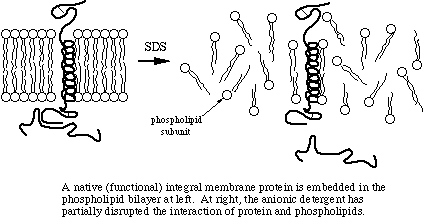
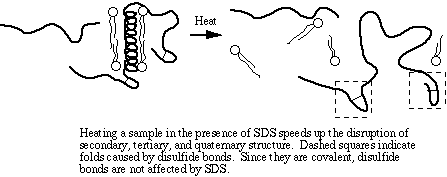
Sample Preparation
- Mix protein sample with LDS Buffer in a 1:3 ratio.
- Heat the mixture at 70°C for 10 minutes to ensure complete denaturation.
- Centrifuge briefly to collect condensate.
Gel Electrophoresis
- Load the samples into the wells of an SDS-PAGE gel.
- Run the gel at a constant voltage until the dye front reaches the end.
Troubleshooting and Tips
- Uneven Bands: Ensure uniform heating and loading of samples.
- Band Distortion: Verify the gel concentration and running conditions.
- Low Resolution: Adjust buffer concentration or gel composition.
Conclusion
LDS Sample Loading Buffer 4x is a robust tool in protein analysis, providing reliability and clarity in SDS-PAGE. Its versatile formulation makes it a preferable choice for a range of applications in molecular biology research.
Article 1: Introduction to LDS Sample Loading Buffer 4x
- Overview: Basic definition and purpose of LDS Sample Loading Buffer in molecular biology.
- Composition: Detailed description of the ingredients in the buffer and their specific roles.
- Comparison with Other Buffers: Differences and advantages over traditional Laemmli buffer or other sample buffers.
Article 2: The Role of LDS Sample Loading Buffer in SDS-PAGE
- SDS-PAGE Explained: Brief overview of SDS-PAGE technique.
- Buffer's Function in SDS-PAGE: How LDS Buffer interacts with proteins, facilitates denaturation, and imparts negative charge.
- Advantages in Protein Analysis: Benefits in terms of resolution, ease of use, and compatibility with downstream applications.
Article 3: Practical Guide to Using LDS Sample Loading Buffer 4x
- Preparation of Protein Samples: Step-by-step guide on preparing samples using LDS Buffer.
- Optimization Tips: How to adjust buffer concentration, sample volume, and heating conditions.
- Troubleshooting Common Issues: Addressing problems like uneven running, poor resolution, or protein degradation.
Article 4: Advanced Applications of LDS Sample Loading Buffer
- Beyond SDS-PAGE: Use in other protein analysis techniques.
- Case Studies: Examples from research where LDS Buffer played a crucial role.
- Future Perspectives: Emerging trends and potential improvements in sample buffers.
LDS Sample Loading Buffer 4x: Revolutionizing Protein Electrophoresis
Precision-Engineered for Optimal Protein Analysis
In the realm of molecular biology, the accuracy of protein analysis is paramount. The LDS Sample Loading Buffer 4x is meticulously designed to meet the rigorous demands of SDS-PAGE, providing researchers with an unparalleled tool for protein separation and analysis.
Key Features
- High Concentration Formula: The 4x concentration ensures optimal protein solubility and sample integrity, allowing for dilution as per experimental requirements.
- Advanced Protein Denaturation: Contains Lithium Dodecyl Sulfate, a detergent that effectively unfolds proteins, ensuring a consistent negative charge and uniform size for precise electrophoretic separation.
- Enhanced Band Clarity: Formulated to reduce smearing and improve band resolution, yielding clearer and more distinct protein bands for accurate analysis.
- Stable pH Environment: Incorporates Tris-HCl to maintain a stable pH, crucial for preserving protein structure during sample preparation.
- Visibility and Tracking: Includes tracking dyes for easy visualization and monitoring of electrophoresis progress.
Applications and Benefits
Diverse Research Applications
- Proteomics Research: Ideal for analyzing protein expression, post-translational modifications, and protein-protein interactions.
- Diagnostic Assays: Used in the development and optimization of diagnostic tests, including disease marker identification.
- Quality Control: Essential in biopharmaceutical production for purity assessment and batch consistency.
Unmatched Benefits
- Increased Sample Stability: Minimizes protein degradation, ensuring reliable and reproducible results.
- Broad Compatibility: Effective across a wide range of protein types and molecular weights.
- Ease of Use: Simplifies sample preparation, saving time and reducing the potential for error.
User Guidance and Support
Sample Preparation Protocol
- Mix protein sample with LDS Buffer in a 1:3 ratio.
- Heat at 70°C for 10 minutes to achieve complete denaturation.
- Centrifuge briefly and load onto SDS-PAGE gel.
Expert Support and Resources
- Comprehensive Guides: Detailed protocol documents and application notes available.
- Customer Support: Expert technical support for troubleshooting and optimization.
- Online Resources: Access to a wealth of scientific literature, usage tips, and peer reviews.
Conclusion
The LDS Sample Loading Buffer 4x is more than just a reagent; it's a pivotal element in the advancement of protein research. Its specialized formulation offers unmatched clarity, stability, and flexibility, making it an indispensable tool for scientists dedicated to uncovering the complexities of the proteome.
Elevating Protein Gel Electrophoresis: Explore the LDS Sample Loading Buffer 4x
Advanced Formulation for Superior Results
In the intricate field of proteomics, the LDS Sample Loading Buffer 4x emerges as a pivotal component for SDS-PAGE, offering superior performance in protein electrophoresis. Its sophisticated formulation is designed to ensure the highest level of precision and reliability in protein analysis.
Cutting-edge Composition
- Optimized Detergent: Lithium Dodecyl Sulfate provides a more efficient and consistent denaturation compared to traditional SDS, leading to improved separation and resolution of proteins.
- Buffering Capacity: Tris-HCl buffer maintains an optimal pH, essential for preserving protein integrity during electrophoresis.
- Glycerol Content: Adds appropriate density to the sample, facilitating easier application into the wells of the gel.
- Tracking Dyes: Aids in visual monitoring of the electrophoresis process, allowing for precise determination of run completion.
Versatile Applications Across Various Fields
Broad-Spectrum Use
- Academic Research: From studying cellular processes to identifying novel proteins, this buffer is an invaluable tool in academic laboratories.
- Biomedical Research: Plays a crucial role in the identification of disease biomarkers and therapeutic targets.
- Pharmaceutical Development: Essential for protein characterization in drug discovery and development processes.
Unparalleled Advantages
- Consistency and Reliability: Ensures reproducible results, a critical factor in research and industrial applications.
- Enhanced Resolution: Achieves sharper and more distinct bands, facilitating accurate protein quantification and identification.
- User-Friendly: Simplifies the SDS-PAGE process, making it accessible to users with varying levels of expertise.
Comprehensive Support and Documentation
Detailed Protocols and Guidelines
- User Manual: Comprehensive instructions on buffer preparation, sample handling, and electrophoresis techniques.
- Safety Data Sheets (SDS): Detailed safety information for handling and storage.
Expert Technical Assistance
- Customer Service: Dedicated support team for troubleshooting and technical inquiries.
- Online Tutorials and Webinars: Regularly updated resources for training and skill enhancement.
Conclusion
The LDS Sample Loading Buffer 4x is not just a reagent; it's a gateway to new discoveries in protein research. By offering unmatched precision, ease of use, and consistent results, it stands as an essential tool for scientists and researchers worldwide, paving the way for groundbreaking advancements in molecular biology.
